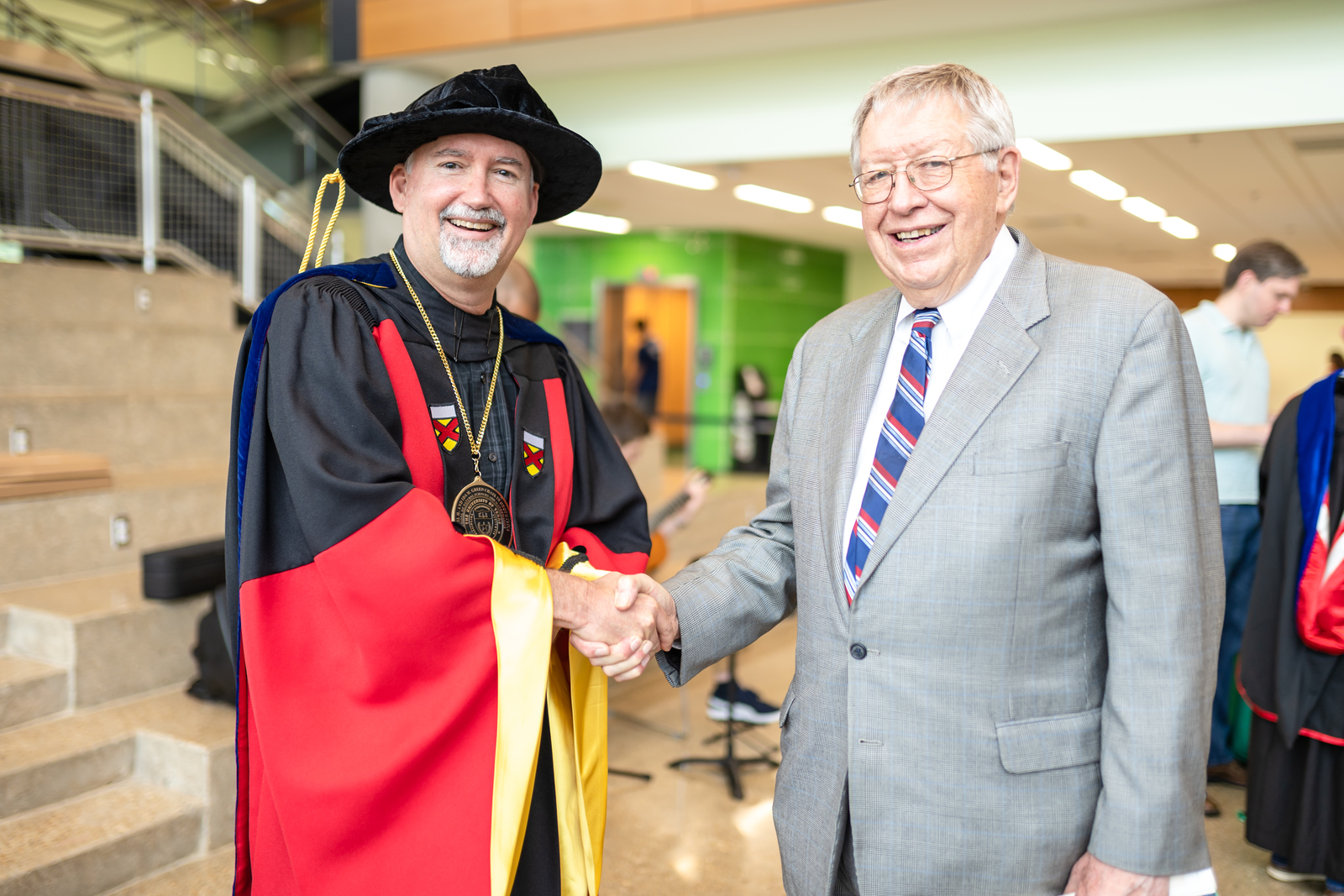
Dr. David Lumley, the Cecil and Ida Green Chair in Geophysics, now is head of the Department of Geosciences, it was announced this month.
He joined UT Dallas in spring 2017 as a tenured, full professor of geophysics and is appointed to geosciences and is jointly affiliated with physics.
Lumley intends to rebuild geosciences with a renewed focus.

“Geosciences was one of the original founding departments when UTD started in the 1960s. Most of the department’s hiring was done at that time and into the ‘70s, and so we now have several faculty members who are retiring [6 retirements in the past 4 years]. Hiring new tenure-track faculty to rebuild the department is priority No. 1 in my mind,” Lumley said.
Earth sciences, along with other STEM programs, has significant work to do to create balanced and diverse work environments. Lumley now has an opportunity to fill up to three tenure-system faculty positions in the area of sustainable Earth systems science.
Citing dramatic global changes over the past 50 years, he said the department needs a renewed strategy to help address society’s challenges via STEM research, education and career development programs.
“Many of today’s grand challenges (e.g., US National Academies report) depend critically on Earth Sciences as related to climate change, and providing natural resources such as clean energy, strategic minerals, and water, in a manner that is both sustainable and protects the environment.
“I plan to help rebuild the department with this ‘sustainable earth sciences’ vision, and its natural links to fundamental earth science research such as planetary science, plate tectonics, paleoclimates, and the near-surface critical zone,” Lumley said.
Before coming to UTD, Lumley was a full-tenured professor and chair of geophysics at the University of Western Australia, jointly appointed in physics and Earth and environment. There, he directed the Center for Energy Geoscience and the UWA Reservoir Management research consortium.
While in Australia, he worked with industry and government agencies to design and monitor carbon dioxide sequestration projects, including two of the world’s largest — over $100 million each — to develop carbon capture and storage methods at commercial scales.
“I’m excited to have a highly accomplished geoscientist with past leadership experience as part of the school’s leadership team,” said Natural Sciences and Mathematics Dean David Hyndman, PhD, and the Francis S. and Maurine G. Johnson Distinguished University Chair.
A native of Vancouver, British Columbia, Canada, Lumley received his bachelor’s and master’s degrees in geophysics and astronomy from the University of British Columbia, and his PhD in geophysics from Stanford University.
“I’m excited to have a highly accomplished geoscientist with past leadership experience as part of the school’s leadership team.”
– Natural Sciences and Mathematics Dean, David Hyndman
Interestingly, Lumley has a few things in common with one of the University’s founders, Cecil H. Green.
“I met Cecil Green during the last decade of his life. My PhD advisor, seismologist Jon Claerbout, was the Green Professor in Geophysics at Stanford, and Cecil Green used to come by to visit us once or twice a year. Cecil and I made a great connection because we had similar paths; he grew up in Vancouver and attended the University of British Columbia and became an engineer and geophysicist, as did I,” Lumley shared in a 2019 interview.
In addition to serving as department head, Lumley is the director of the 3D+4D Seismic Imaging and Inversion Lab at UT Dallas. His research focuses on wave-theoretic seismology, time-lapse imaging and monitoring of subsurface fluid flow; carbon dioxide storage; and other subsurface energy resources and storage, including geothermal. He also has applied his research to medical imaging, groundwater and environmental monitoring, and enhanced detection of astrophysical gravitational waves [like with black hole mergers].
Help us leave the planet a better place for future generations. Your support for the School of Natural Sciences and Mathematics funds scientific discoveries with real-world applications, student and faculty recruitment, and academic scholarships.